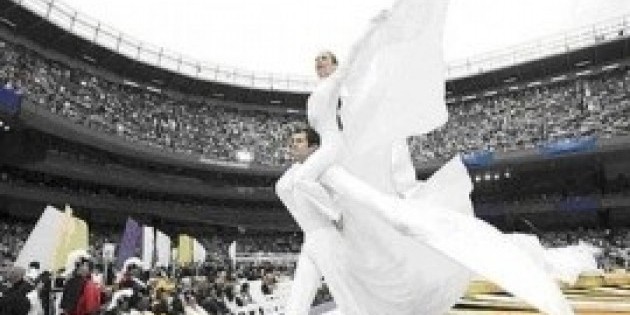A POSTCARD from Blakeley White-McGuire

Blakeley White-McGuire of Martha Graham Company Dancer - On The Creative Collaboration between SITI Company and Martha Graham Dance Company
Teaching, learning, doing, observing. Progress not perfection - process not production.
Director, Anne Bogart began our first rehearsal by saying, “ this is a process of merging two disparate entities, and the product will be the result of that honest process”. She is a woman of her word. As actors, dancers, directors, managers, sound and lighting designers and writers, we have come together; honestly sharing our work and the idea that product can be a catalyst for revealing and understanding... each other (as well as the content of the piece, American Document).
Each rehearsal day began with three different, yet related training approaches - Graham technique, Suzuki Method and Viewpoints. During this valuable time given to our training, we built the common ground from which we would leap into the creative chasm.
For me, the most pronounced aspect that the SITI and Graham companies share is the respect of discipline - physical, intellectual and creative. It is not a discipline of deprivation; rather it is the cultivation of form (physical and vocal), which empowers the performer to achieve free and intensely focused expression.
The challenge of significantly employing both actors and dancers in the creation of a theater piece is great indeed. In my previous experience of such experiments, the dance has typically been relegated to second fiddle while the words take on the lion’s share of revealing the work. My hope was that the openness and creativity generated by SITI Company might facilitate a way of integrating and respecting both voices - the spoken and the danced, without watering down the potency of either. There is an old saying in the dance world, “dancers are better seen than heard”, and it is only just now that I am understanding the true limitations implicit in that kind of thinking.
The spoken word and the danced gesture are different. They do not attempt to say the same thing. Dance is not a physicalization of the spoken word; it is not an interpretation of someone’s thoughts or philosophies. Dance is a synthesizing of an experience, a thought, a word, and/or philosophy into the secret, unnamable language held in the body. This is how it is for me. And I see now, through working with the formidable actors of SITI Company, that the same is true in acting.
I suppose it seems obvious, and perhaps I am the last one to get it; but I see now that the spoken word is a form which also holds a secret. Deep inside the being, there is a little dance that the actor is dancing, revealing the same secret language through words.























